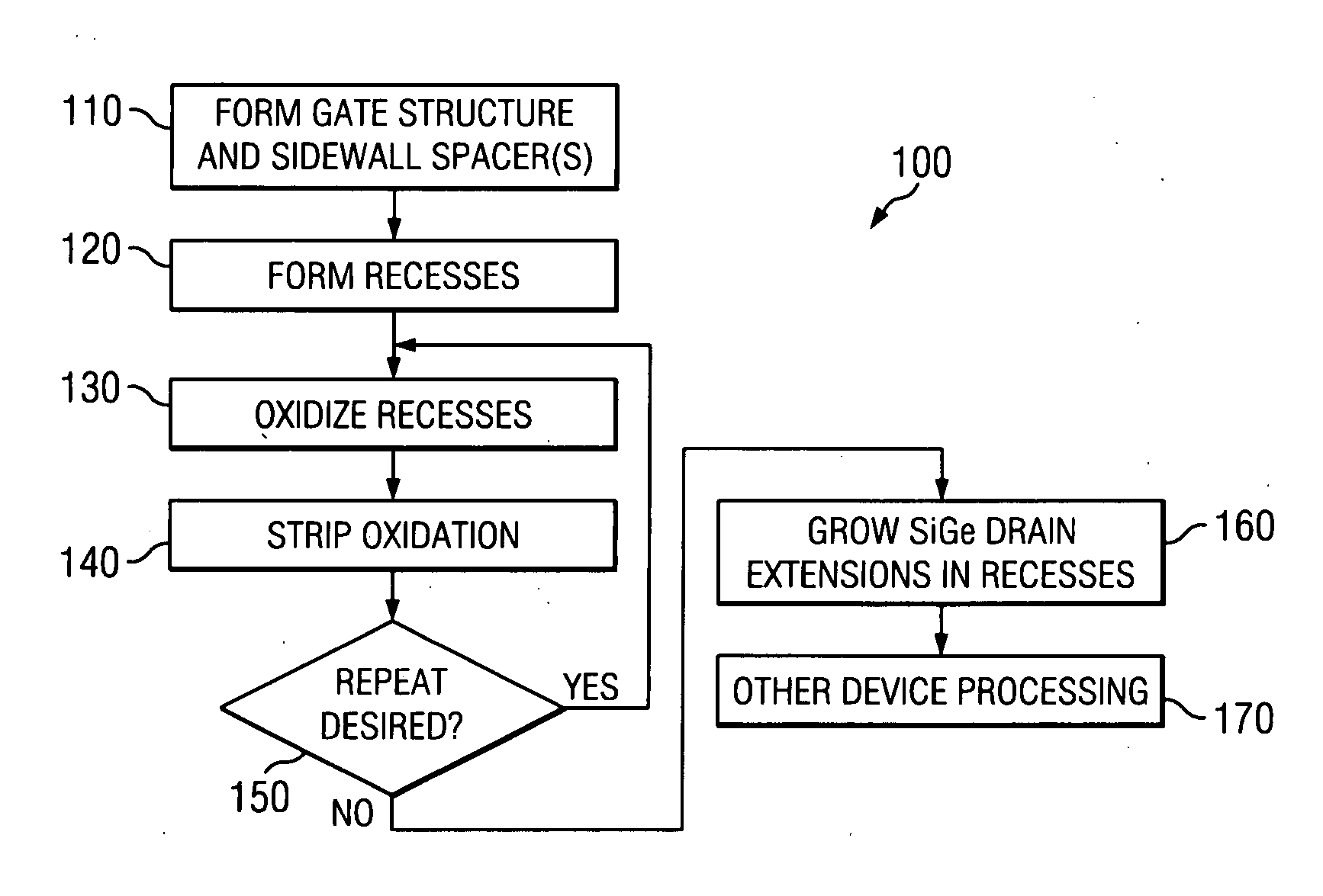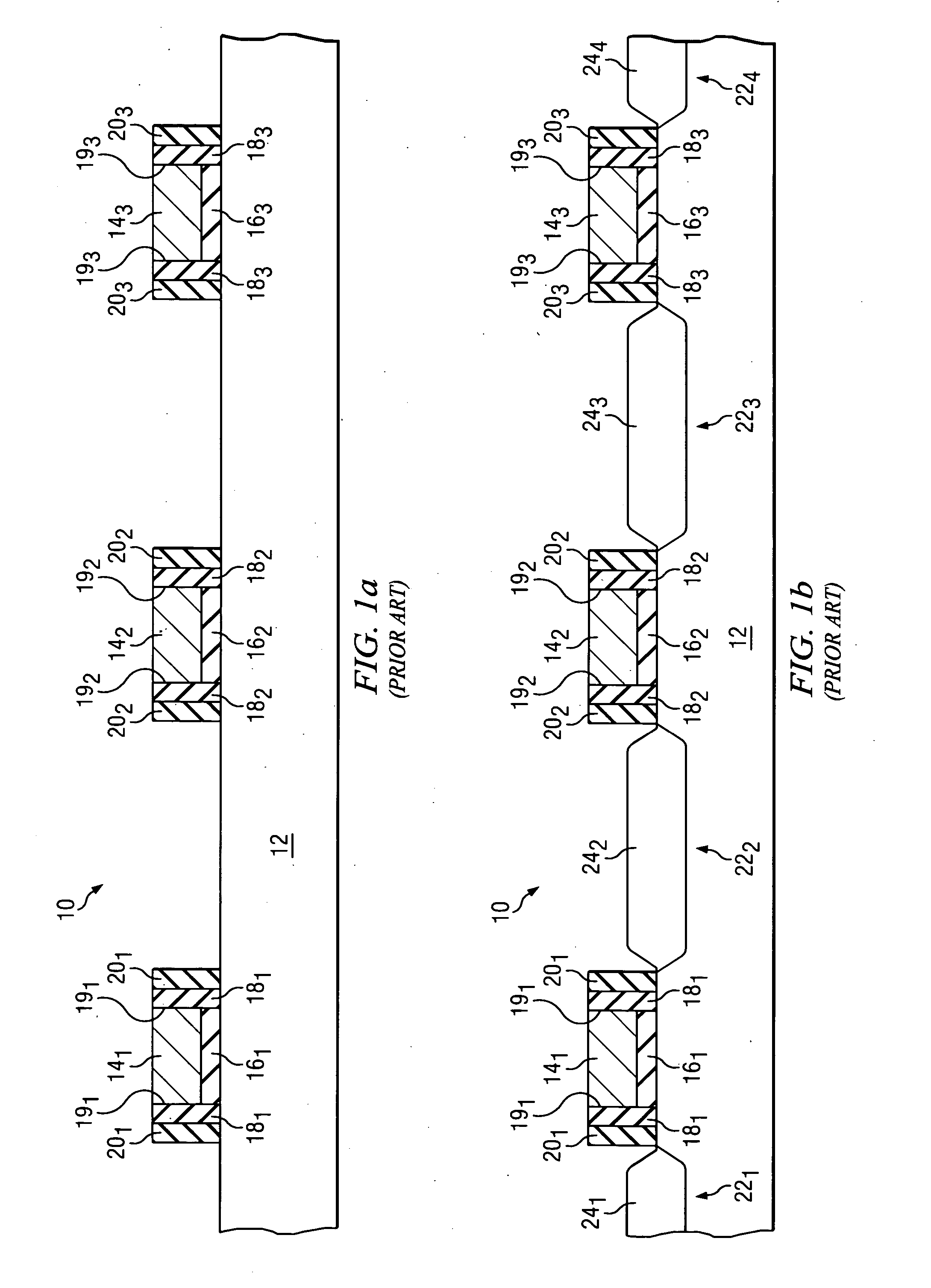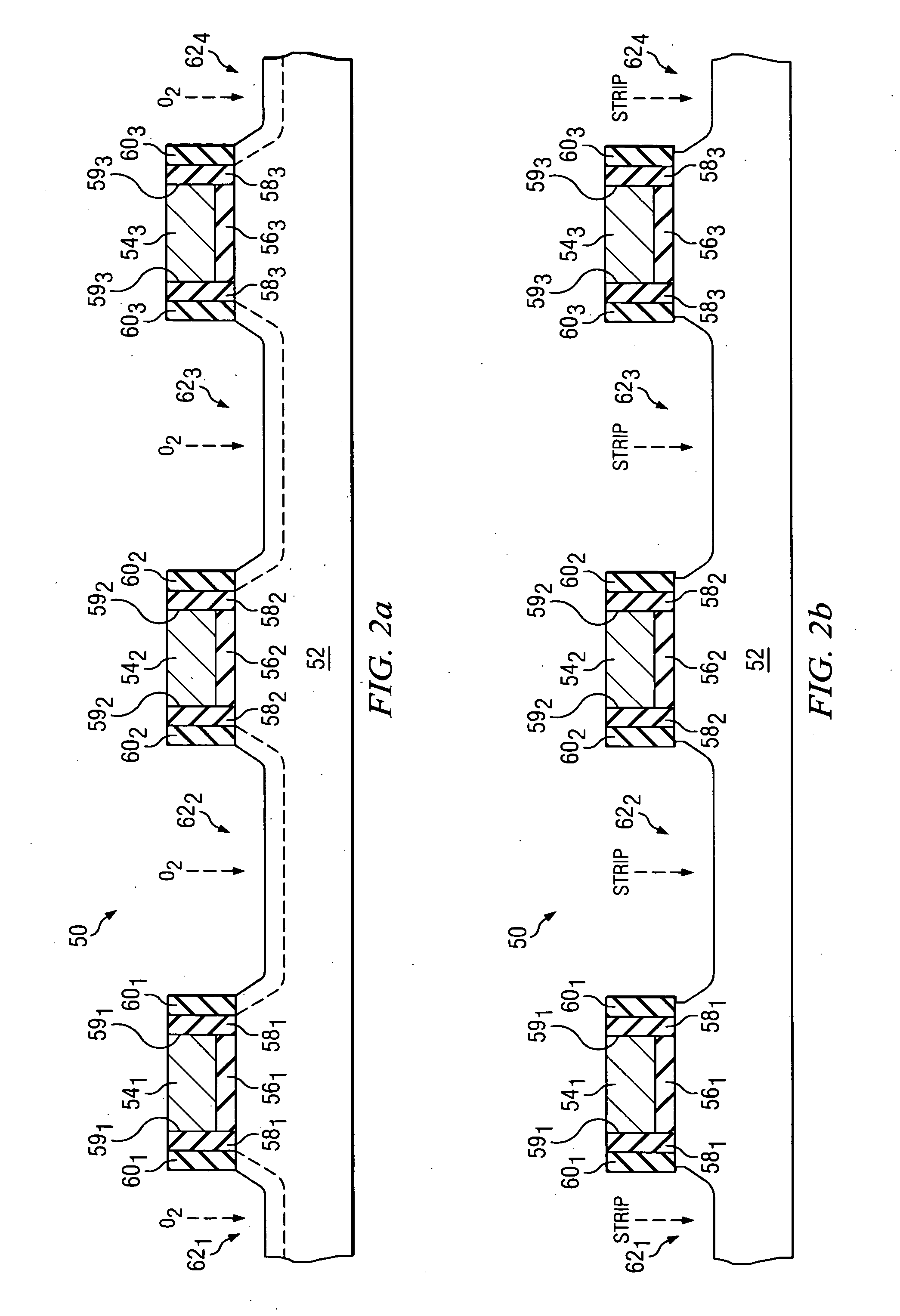Recessed drain extensions in transistor device
a transistor device and extension technology, applied in the field of electromechanical circuit manufacturing, can solve problems such as compromising the quality of epitaxial sige deposition
- Summary
- Abstract
- Description
- Claims
- Application Information
AI Technical Summary
Problems solved by technology
Method used
Image
Examples
Embodiment Construction
[0015]FIG. 1a illustrates a cross-sectional view of a prior art integrated circuit semiconductor device 10, where device 10 and the later discussion demonstrate in part the formation of recessed drain extensions according to the prior art. Device 10 is formed in connection with a silicon semiconductor substrate 12. Overlying substrate 12 are three gate conductors 141, 142, and 143, where typically each gate conductor 14x is formed at a same time and with a material such as polysilicon. Each gate conductor 14x is separated from substrate 12 by a respective gate insulator 161, 162, and 163, and the combination of conductor and respective gate insulator is sometimes referred to as a “gate stack.” Along each sidewall 19x of each gate conductor 14x is formed a first sidewall layer 18x, typically formed of an oxide, where often that oxide is grown on the sidewall 19x of the corresponding polysilicon gate structure. For example, with respect to gate 141, it has a first sidewall layer 181 f...
PUM
 Login to View More
Login to View More Abstract
Description
Claims
Application Information
 Login to View More
Login to View More - R&D
- Intellectual Property
- Life Sciences
- Materials
- Tech Scout
- Unparalleled Data Quality
- Higher Quality Content
- 60% Fewer Hallucinations
Browse by: Latest US Patents, China's latest patents, Technical Efficacy Thesaurus, Application Domain, Technology Topic, Popular Technical Reports.
© 2025 PatSnap. All rights reserved.Legal|Privacy policy|Modern Slavery Act Transparency Statement|Sitemap|About US| Contact US: help@patsnap.com



